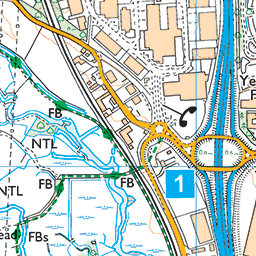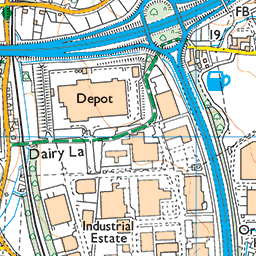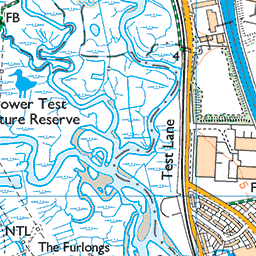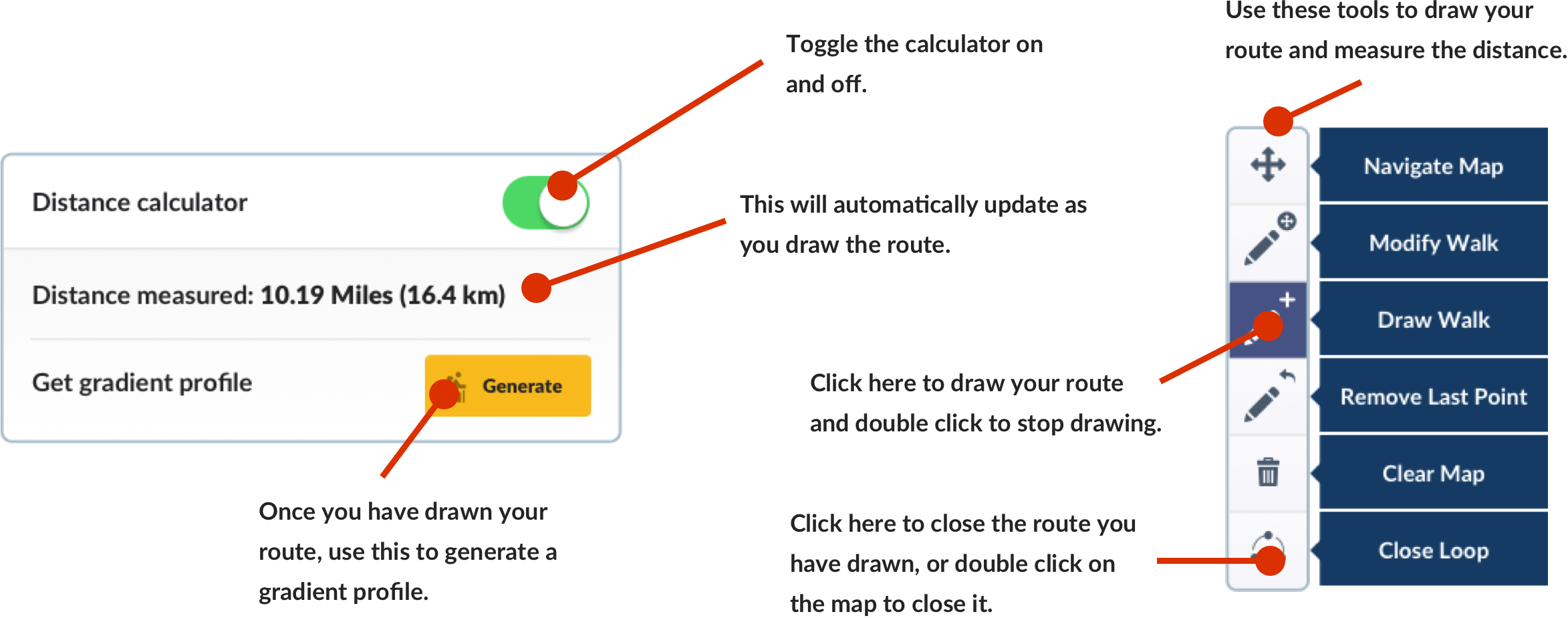Pennine Bridleway Map and Information
See the map and find answers to the most common questions about the Trail below
Designed specifically for equestrians and mountain bikers the Pennine Bridleway runs for 205 miles (330 km) through the dramatic Pennine hills from Derbyshire to Cumbria. Following old lanes, pack horse routes and drover’s roads, it provides a real sense of stepping back in time. It is the perfect way to explore the varied landscapes and industrial archaeology of the Pennines.
Use the Map Filter to see places to visit and where to stay along the Pennine Bridleway. View information on the map by ticking the boxes in the Map Filter.
Wedi’i ychwanegu at eich Cynllunydd Taith isod
Cyfrifiannell pellter
Customise your trip with our filters.

Ewch o un opsiwn i’r llall isod i ddangos y marcwyr sydd ar gael.
Cyffredinol Marchogaeth BeicioLlety
Pwyntiau o ddiddordeb
Gwasanaethau
Llwybrau
Llety
Pwyntiau o ddiddordeb
Trafnidiaeth
Llety
Pwyntiau o ddiddordeb
Trafnidiaeth



















Select the blue arrow tabs below for more details.
Frequently asked questions about the Pennine Bridleway
The length of time taken to complete all or sections of the Trail will depend on whether you’re horse riding, cycling or walking the route. The following are rough guides but other factors such as fitness levels and stops along the route should also be considered when planning your trip.
Horse riding and Walking
Cycling
The following distances are a guide to help you plan your trip:
The route runs through the Pennines so expect hills and changeable weather! The most southerly section follows the High Peak Trail, a reclaimed railway line where the surface is relatively level but after this the gradient and surface become more changeable and challenging. The South Pennine valleys (crossed by the Mary Towneley Loop) are particularly steep.
The route follows a variety of surfaces including minor roads, aggregate tracks, grassed stone tracks, stone setts and worn causey flags. Some of these have been newly created specifically for the Pennine Bridleway but some are ancient highways such as drovers roads or packhorse trails that have been in use for centuries. The route is not a particularly fast route for horse riders due to the stony nature of some of the tracks, however there are still opportunities to canter.
As the route progresses northwards through the Yorkshire Dales it becomes more remote and the settlements are fewer so Trail users should be sure to carry supplies and be prepared for all weather conditions.
There is an interim route suggested for walkers in the area of Glossop, Derbyshire whilst the eventual line for the National Trail is under negotiation/construction. This route is not usable by horse riders or cyclists as parts of it follow Public Footpaths.
An alternative route for cyclists is also available; this is shown as the main route on our interactive map. Unfortunately there is no alternative route for horse riders at this time, and we recommend that you box-up and re-join the trail via the Longdendale Trail to the north, or from Hayfield in the south.
If you’ve had a family day out on the Pennine Bridleway National Trail why not continue the fun with your little explorers at home? Online educational publishing house, Twinkl have created a range of fantastic Pennine Bridleway activities which can be downloaded for free. Whether it’s a colouring page, dot to dot or interactive puzzle, the resources will let youngsters continue their adventure even after you’ve left the trail.
To access and download the resources, visit the Twinkl Out and About website or follow the links below. Please note that you will need to create a free account to download the activities.
Work continues to make the trails accessible to more people.
Our Access for all page brings together access information about the National Trails including easy access walks and sources of further information.
Public Transport
The Trail is accessible by public transport. If you are planning to travel by train or bus with your bike, we recommend that you contact the operator first as not all trains/buses carry bikes and some restrict the number they will carry.
The nearest train station to Middleton Top is Cromford, a mile from the start of the High Peak Trail. Public buses also stop about a mile away from Middleton Top.
At the northern end of the trail the official route ends at the A683 in Ravenstonedale. The nearest train station is on the southern edge of Kirkby Stephen, approximately 6km away. There is an alternative route branching off the Pennine Bridleway which will take you directly to Kirkby Stephen using public rights of way (pdf map 1Mb).
There is an in-frequent bus service between Ravenstonedale and the train station at Kirkby Stephen, see the Dales Bus website for details.
Within the Yorkshire Dales National Park, the Trail follows and leap-frogs the Settle to Carlisle Railway line providing options to enjoy sections of the trail and return by train to your starting point. Further information is available here: Settle-Carlisle Railway
For detailed rail information please see www.nationalrail.co.uk
You can find up-to-date public transport information including a journey planner at www.traveline.info
Parking
If you want to leave your car in a public place whilst spending several days walking or cycling on the Trail, we recommend that you inform the local police of your intentions. You may be able to leave your car with your accommodation provider.
There are a number of places along the Trail that are suitable for short stay horsebox parking. These are shown on the Interactive Map. We don’t recommend that you leave horseboxes overnight in rural car parks. Many of the farmhouse accommodation providers are able to arrange secure horsebox parking – check the accommodation details on the map.
There are plenty of campsites along the Trail and they can be viewed on the Interactive Map or by selecting ‘camping’ from the list of accommodation options for each section of the Trail.
If you plan to camp please note in England and Wales, there are normally no rights for national trail users to wild camp along the way – so seeking the landowner’s permission is recommended.
There are several companies that will arrange to move your bags for you, help you plan your trip, or arrange a full package.
View a list of these companies here.
The best time to complete the Trail is April to October, when the weather is most favourable. However the route itself can be steep and exposed, so always be prepared, especially if you are planning a journey of a day or more.
Most people start in the south. The southern section of the Trail offers an easier and gentler start to a journey and the National Trail handbook for the Derbyshire to the South Pennine section and the Cycling Guide for the Mary Towneley Loop to Cumbria section are both written heading south to north.
We recommend that you take a map and/or guidebook with you, or a copy of the walk/ride leaflet if you are doing a shorter walk/ride. You may also find a compass useful.
If you are walking/riding solo you may want to tell someone where you are going as there can be mobile black spots along the Trail. Ensure your phone is fully charged before setting off.
Weather in the UK can be changeable so it’s wise to be prepared. You’ll need good footwear, waterproofs and warm layers. Take plenty of water and just in case, pack a few plasters for your feet. In the summer you may need sun cream.
If you are cycling the Trail make sure you carry a puncture repair kit, spare inner tubes and brake blocks.
If you are riding the Trail we recommend that you carry a horse boot in case your horse loses a shoe. It is also worth carrying a collapsible bucket – there are troughs and streams but access to water in some places can be tricky.
Phone reception can be patchy in the Pennines. Don’t rely on being able to use your phone to help you navigate.
Wi-Fi is available at some accommodation and pubs/café’s along the route.
The UK is unique in having a network of paths that the public can use; this is the Public Rights of Way network. You can see these paths on Ordnance Survey maps.
National Trails are signed with an acorn symbol and/or the Trail name which you will see on stiles, gates and signposts. This is the symbol used by all the English and Welsh National Trails.
As you are walking/riding along the Trail you will also see waymarkers pointing to other paths. You can use the public rights of way network to leave the Trail to explore places of interest, reach your accommodation and find places to eat and drink.
You will often find a coloured arrow on signs which indicates the status of that section of path. The most common are yellow arrows which are footpaths and blue which are bridleways.
A GPX file can be downloaded from the Create Your Own Trip page (the button is below the map).
A complete circuit of the Mary Towneley Loop will see you covering 47 miles (76 km) and more than twice the climbing height of Snowdon!
Depending on your level of fitness, it might be possible to cycle the Mary Towneley Loop in a day but it’s much more sociable and enjoyable split over two or even three days.
As it’s a circular route, if you’re completing the whole Loop, you can obviously start and finish anywhere and end up back at your starting point.
It can be cycled either clockwise or anticlockwise but anticlockwise seems to be the most preferable.
The route is a mixture of rough gravel tracks, bridleways, grassy tracks and old packhorse routes. The old packhorse routes are large setts (paving blocks) in a single row or smaller setts like a traditional pre tarmac road surface; both will shake any loose bolts and fillings out so be prepared!
The terrain is constantly changing so may appear a little unforgiving at first if you’re used to cycle paths or road riding. You might get a section of smooth gravel for a kilometre or so and this will then change to an old track surface. Stick with it and enjoy the variety.
As you leave Lancashire and enter North Yorkshire there are a few sections of field crossings. These can be pretty challenging by bike, especially if the fields haven’t been cut. Keep an eye on your rear mechanism and make sure it doesn’t get clogged and damaged with grass.
Pennine Bridleway Ranger, Bill (also an experienced cyclist), shares his top tips and advice for cycling the Pennine Bridleway whilst answering this popular question.
“There is no need to rush out and buy the latest bike for the Pennine Bridleway! You can ride the route on any bike but it might not be fast or comfortable and it might not stand up to the terrain for long. The route is not a canal towpath, or a smooth cycle path, nor is it a well-groomed forest gravel track. The Pennine Bridleway takes in a variety of surfaces, well away from towns and villages, on old routes that can shake your fillings loose in sections.
“A full suspension bike, although comfortable will be slower than a hardtail. I personally would avoid a hybrid bike as although they may be part road, part mountain bike, they tend to have an emphasis on road or smooth surface riding. The majority of the Pennine Bridleway is off road so your bike choice should reflect this. A cross country hardtail with front suspension is the best compromise for comfort and speed.
“Tyres are again a personal choice. I personally go for a grippy tyre on the front and a fast rolling cross country (XC) tyre on the back. The majority of the route has some sort of stone surface so a heavy mud tyre would be unnecessary and would create more drag. Very fast rolling, lightweight file treads or hybrid town and country tyres will offer little grip in Pennine conditions (think rain and mud!) and may suffer sidewall damage easily. If you’re riding a rigid bike, having tyres with volume will help with comfort over those bumps.
“In terms of gears, there are a lot of short stabby climbs and some long drags uphill so gearing that you can winch uphill is recommended. It’s also advisable to make sure you’ve got suitable shoes for walking in – there’s nothing wrong with getting off and walking, be that uphill or downhill. Road cleats would not be recommended.
“Make sure you’re carrying spare parts that are specific for your bike. Whilst there may be cycle shops near the route, they will need a detour of several miles to reach them. Some sections of the trail are very remote. Having a selection of maintenance skills and spares that can get you off the hills is worthwhile. A few recommendations would include:
“How you pack and what you bring will also affect your ride; their would-be little point in using a lightweight gravel bike only to overload it with excessive baggage. It’s possible to spend a lot on bike packing gear but remember, the more you carry the heavier (and harder to handle) your bike becomes. It might be better to spend some money on a couple of nights’ accommodation meaning you can lighten your load, and remembering the Pennine weather, you might also have the option to wash and dry your kit too!
“Saddles sores on a multi-day trip are no fun. Chamois cream, dry/clean bib shorts and a small tub of Sudocream (usually used for nappy rash) would be my top tips.
“Always check your kit before a big multi-day ride and in particular consider how easy it is to load up and how it sits on the bike. It’s always best to go for a day ride before attempting a multi-day ride to sort out any issues with packing stability.”
Whatever your level of experience, for every cyclist there are a few basic points to consider before heading out on to the Trail.
Plan ahead, go prepared and postpone your visit if necessary. The unmade surface and terrain of the Trail means you’ll cover far fewer miles than on tarmac routes. The Trail is exposed and prone to changing weather conditions which can make surfaces challenging. If you start from Middleton top the first 10 miles (16 km) are on a disused railway. This is the smoothest the Pennine Bridleway will be and is not typical of the majority of the Trail – it will get hillier and the surface will get rougher!
The Trail is a ‘shared use’ route. This means you could come across not just other cyclists but also horse riders, walkers, dogs, people using mobility scooters or trampers, event runners and so on. You may also come across people who live and work alongside the Trail and also livestock being farmed on land which the Trail crosses. Everyone’s experience of the Pennine Bridleway will be more enjoyable if we are friendly and considerate towards each other.
There are some useful tips for how to pass horse riders safely in this video produced by Cycling UK and the British Horse Society: ‘Be Nice Say Hi’ campaign
Cyclists should make themselves familiar with the Countryside Code and Cycling UK’s Off-Road Code of Conduct before heading out on the Pennine Bridleway.
Please respect the Pennine Bridleway and keep erosion to a minimum by keeping to the worn track and not straying either side of the main trail route.
There is a good choice of accommodation close to the Trail and it can be viewed on the Interactive Map above. Use the map filters to display different types of accommodation.
Alternatively, download and print a list of accommodation for each section of the Trail.
The area is popular and accommodation can book up quickly in peak season so we recommend that you book it well in advance.
Visit our Trail Holidays page for holiday inspiration for the Pennine Bridleway.
The official guidebook and map for the Trail are available from the The Trails Shop along with a wide range of gifts and other merchandise.
You can find a list of Ordnance Survey maps for the Trail here.
Certificates are available from the The Trails Shop.
There are a wide range of useful leaflets to download, which will help you explore some of the different sections of the route. Find these in the Further Information section.
There are some great circular rides and walks to enjoy along the Pennine Bridleway, giving you the opportunity to experience the wonders of the Trail over shorter distances. Find the perfect ride or walk for you in the Further Information section.
Feeling inspired? Build a bespoke itinerary and start planning your visit to this great National Trail here.
If you have feedback or a question about the Pennine Bridleway, please contact the Trail Manager.
